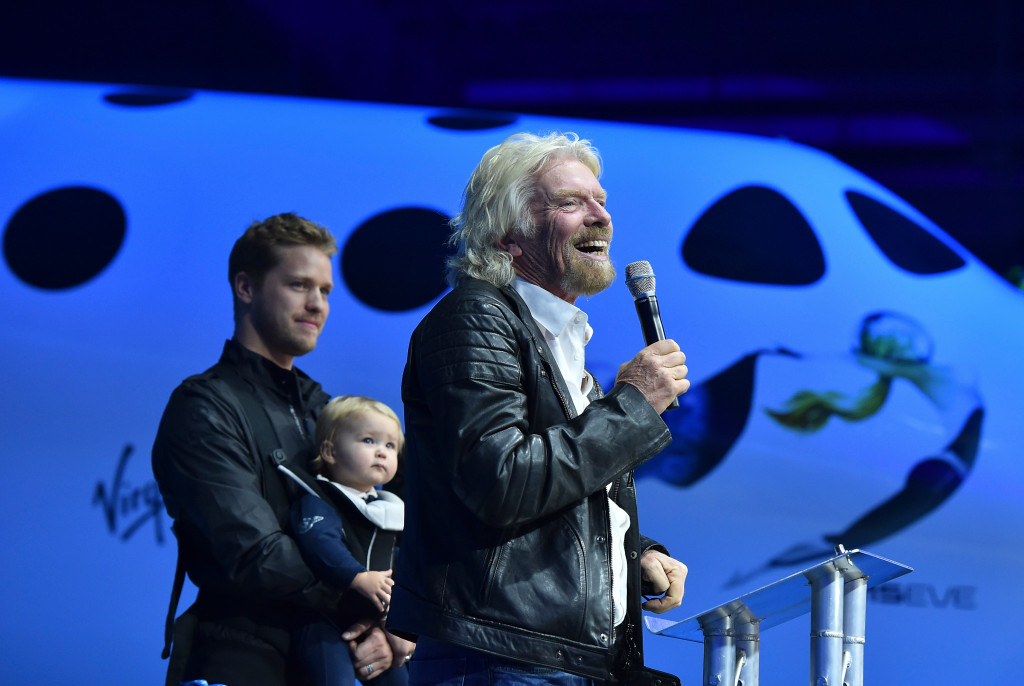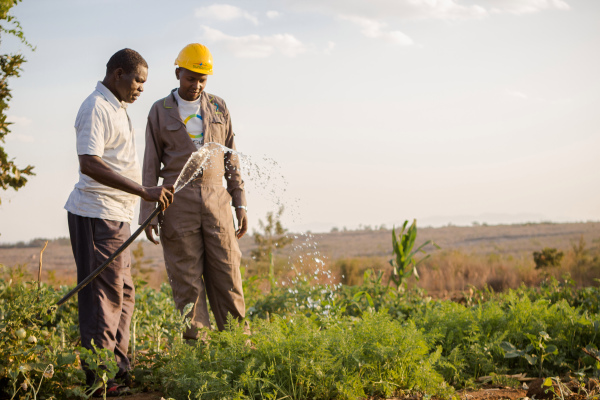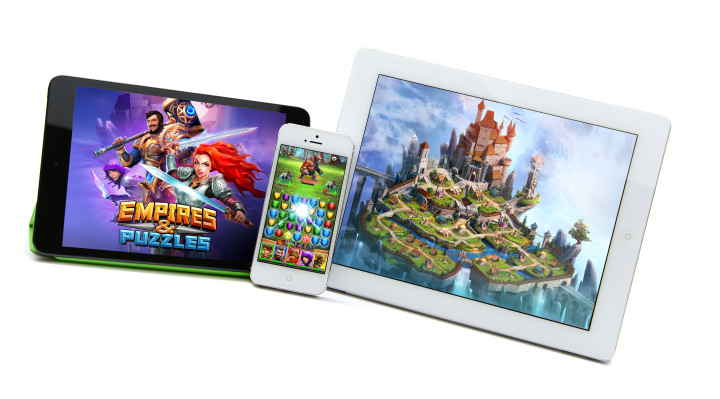By Christian Davenport
Rocket engine lit, and they were off. Within seconds, the spacecraft crested 600 mph, fast approaching the speed of sound. Then, suddenly, there was the surreal sensation of the wings ripping off as if they were made of paper.
Debris littered the desert floor. And in the wreckage, first-responders found the lifeless body of one of the pilots, Michael Alsbury, a father of two, then ages 10 and 7, still strapped into his seat. Miraculously, his co-pilot survived a nearly 10-mile fall.
That day in 2014 had started with such promise. The hope that Virgin Galactic, the company founded by Richard Branson, was on the verge of finally fulfilling the dream of flying tourists to space.
Today, four years later, the company says it is once again at that moment. Branson, chastened by the crash and the ensuing federal investigation that found widespread problems with the program, recently said that the company is “more than tantalizingly close” and that “we should be in space within weeks, not months.”
Virgin Galactic’s next flight of SpaceShipTwo, its winged and sporty space plane, is scheduled for launch in the coming weeks and could, after years of trying, give Branson his long elusive conquest of blasting through the atmosphere. It would mark a historic milestone for Virgin and Branson, a master of marketing and hype who for years has become an evangelist for space exploration.
Since the space shuttle retired in 2011, not a single human being has launched to space from U.S. soil. If Virgin is able to make it, the company would not just restore that capability, but it would become the first to fly people in a new space race of ventures backed by a group of billionaires — Elon Musk, Jeff Bezos and Branson. They are vying to fly humans and ultimately open up space to the masses, but along the way they have faced repeated delays and setbacks with their human spaceflight programs.
Perhaps no venture has more encapsulated the triumphs and agonies of the effort to open the frontier than Virgin Galactic, founded by Branson more than a decade ago with the loftiest of ambitions.
Virgin has faced all sorts of problems, especially as it tried to build a new rocket engine. But Branson has steadfastly stood before the cameras promising the stars, a Disney ride to the expanse only a big-thinking billionaire could offer.
“You’re on a high, this is really happening,” Virgin’s website boasted in its early days. “You start to relax; but in an instant your senses are back on full alert, the world contained in your spaceship has completely transformed.”
That was supposed to happen in 2007, as Branson initially declared. But it’s been 14 hard years. Then the low point: the horrific crash in 2014.
The National Transportation Safety Board would find that Scaled Composites, the company hired by Virgin to build the spacecraft, failed to properly train its pilots and did not implement basic safeguards to prevent the human error that caused the accident.
Branson was criticized with playing with people’s lives to fulfill a self-aggrandizing fantasy. In an op-ed in Time magazine titled “Enough With Amateur-Hour Space Flight,” Jeffrey Kluger, an editor at large, wrote that Branson was “a man driven by too much hubris, too much hucksterism and too little knowledge of the head-crackingly complex business of engineering.”
Given all the setbacks, many thought Branson would call it quits after Alsbury’s death. In an interview last year, he said he considered it, especially given how it was “horrendous for the families.” Rushing to Mojave after the crash, he wondered whether it was worth the risk, and whether he had taken on a project too dangerous and difficult, that maybe he should just give up. But he was buoyed, he said, when he arrived and his team urged him to keep going, as did many customers.
“We had the biggest hug in history,” he said. “And I made it clear that we would continue.”
The support overrode the sometimes “very cruel” treatment he received in the press, he said. Virgin Galactic responded by taking over construction of the spacecraft from Scaled Composites and redesigning it to make it more safe.
“From now on, we’ve taken everything in-house and anything that happens from today will be down to Virgin Galactic,” he said in the interview.
Today, Alsbury’s death is always in the background, a reminder of the danger of the endeavor, company officials said. Not far from Virgin’s hangar at the Mojave Air and Space Port in the desert here there is a plaque commemorating the test pilot. Tucked away in a small, walled-off garden, it’s hard to find and rarely visited. A distant memory hidden in recesses of the California desert.
But there Alsbury is — smiling in his flight suit, the deep blue sky behind him — with a saying etched underneath his photo:
“Ad Astra per Aspera.”
“To the stars through hardships.”
The test pilots
Dave Mackay, Virgin’s chief test pilot, is a calm and reassuring presence in the cockpit. Even at 61, he looks like the former Royal Air Force pilot he once was — close-cropped hair, bright eyes, square jaw with the sunken cheeks and bony build of a marathon runner. He acts it, too, delivering the step-by-step narration of going to space in a monotone Scottish brogue, wholly at odds with the supersonic thrill his passengers are supposedly experiencing.
He’s sitting in Virgin Galactic’s flight simulator, where the crew of test pilots have logged hour after hour. During drills, mission control will throw all sorts of curveballs to see how the pilots react in emergency situations. But today, Mackay (pronounced Mac-Eye) is going for a mere stroll, an easy ride to space — virtually.
“Here we go,” he says, as if off for a Sunday drive of his native Scottish highlands.
Unlike more traditional rockets that launch vertically, SpaceShipTwo is tethered to the belly of a mother ship, known as WhiteKnightTwo, which carries it to an altitude of 40,000 feet or so. Once aloft, the spaceplane is released and falls for a few seconds before the pilots light the motor.
In the cockpit of the simulator, Mackay fires the engine.
“Now we’ve got the three-G acceleration,” he says. “So you’ve got to imagine what that feels like.” The sudden sensation of your body weight feeling three times the force of gravity, pinned back into your seat, as the spacecraft leaps forward near the speed of sound.
“There’s the transonic pitch up,” he says, as casually as if going over a speed bump. “And now I’m pulling the aircraft up into the vertical. It pitches up pretty dramatically as you can see.”
Surrounding the cockpit simulator are computer-generated images of what Virgin’s customers would be seeing in real time. Suddenly, the ground isn’t where it used to be. The spacecraft is pointed up, to the stars.
“We’re through Mach 2. We’re going through 80,000 feet, and we’re pointing more or less straight up,” Mackay says. “You can see straight ahead. The sky is already dark. Going black.”
Soon, at Mach 3, the motor shuts off. Mackay has flipped the simulated spacecraft over, so it is upside down, floating up, the blackness of space ahead, Earth below. There’s the California coast. The Baja peninsula. The Pacific. A magnificent view of a landscape at once familiar and, without the formal demarcation of borders, utterly foreign.
“So, you’re in weightlessness right now,” Mackay says. “At this point, we would allow our customers to unstrap and float around the cabin.”
That’s the experience Branson has been selling since he bought the rights to the spacecraft’s technology in 2004 from Paul Allen, the co-founder of Microsoft. A space enthusiast, Allen had invested $20 million to build SpaceShipTwo’s predecessor, SpaceShipOne, which made it to the edge of space three times that year, winning the $10 million Ansari X Prize and becoming the first privately funded vehicle to get to space.
But Allen, who died last month, was petrified by the flights — one went initially off course; in another, the spacecraft spun like a top almost all the way up — and ultimately decided that the endeavor was too risky.
Knowing the “person whose life hung in the balance,” he wrote in his memoir, was “hard to handle.”
Branson, however, showed no such fear. And his team got to work on a much bigger and more complicated spacecraft. Allen’s SpaceShipOne was designed for three people, but Branson’s version would be able to hold as many as eight — two pilots and six passengers.
From the beginning, he vowed that the company would fly 3,000 people in the first five years. No matter that the spaceship was more fantasy than anything else. Or that he had no experience in the rocket business.
Branson had triumphed in all sorts of endeavors, building an empire that at various times has covered everything from airlines to wine, hotels and casinos. Space would be the ultimate conquest, and the promotion started immediately. Virgin Galactic declared that it would become the “world’s first commercial spaceline.”
“One day children around the world will wonder why we ever thought that space travel was a dream we read about in books,” Branson said.
That was in 2004.
Today, though, they are close. Again.
Initially, the company hopes to fly 50 miles high or more. While that is short of the 100-kilometer, or 62-mile, “Karman line” that is often considered the edge of space, military and NASA pilots were awarded astronaut wings for reaching 50 miles or higher in the X-15 rocket plane. And many, including Jonathan McDowell, an astrophysicist at the Harvard-Smithsonian Center for Astrophysics who keeps a list of all spaceflights, say that space begins at 50 miles.
“My plan is to count those people as astronauts and to include them on my list,” he said.
Virgin believes 50 miles qualifies as well.
“We’re going to go show that the thing we built can do what we’ve always said it could do: It can take people to space regularly and routinely,” Virgin’s president, Mike Moses, said in an interview. “For the longest time it’s always been a year away, or a month away. Now it’s back to it’s right around the corner.”
Signing up in droves
The hype worked. Customers signed up in droves — 200, then 300. Celebrities, space enthusiasts, adventurers who paid $200,000 before the cost of the ticket rose to $250,000. Eventually, Virgin had more people on its waiting list than the 560 people who had ever been to space. Today, they come from 58 countries and are overwhelmingly, 84 percent, male. The youngest to sign up was 11 years old (but 18 is the youngest to fly). The oldest is in his 90s.
Branson kept crowing that the company was close. And by late 2014, he could barely contain his excitement, telling a British talk show that getting to space was “right around the corner,” hopefully by Christmas.
Still, the spacecraft had to go through a few more test flights before it was ready. And on Halloween, Alsbury, then 39, and his co-pilot Peter Siebold, then 43, climbed aboard for another flight designed to put SpaceShipTwo through the paces.
The pair were close friends, whose children often played together on weekends. Both had largely taught themselves to fly, and they went to the same university before going to work for Scaled Composites, the company Virgin had hired to build SpaceShipTwo.
Siebold considered the mission “high risk,” as he would tell investigators after the crash. When investigators asked him why, he said they were performing “a significant envelope expansion that day. Flying an unproven rocket motor in an unexplored aerodynamic regime. … Classic test hazard assessments would characterize that as high-risk flight.”
At first, all seemed fine. SpaceShipTwo was released from the mother ship. Alsbury ignited the engine, and they were off. Then Alsbury unleashed a device known as the “feather,” allowing the wings of the spacecraft to rise above the crew cabin. In space, it would stabilize the vehicle, and orient it for reentry into the atmosphere. But now, as they were screaming across the sky at more than 600 mph, it was like throwing the gearshift into reverse.
Siebold heard grunting noises, a jolt and bang and then the sound of the spacecraft ripping apart, like “paper fluttering in the wind.”
He blacked out. When he came to, he was outside the spacecraft in a free fall, hurtling toward the ground, unconscious. When he woke up, his pilot training kicked in and he tried to extend his arms and legs to create drag before his parachute deployed. But his shoulder hurt. Maybe it was dislocated, Siebold thought. So he tried to shove it back in the socket.
He’d need it to steer the parachute.
Siebold landed in a creosote bush, his arm broken in four places, a piece of fiberglass in his left eye, but otherwise okay.
Alsbury was not so lucky. The cause of death, according to the coroner: “blunt force trauma to the head, neck, chest, abdomen, pelvic area and all extremities and internal organs.”
Coming back slowly
Virgin’s test pilots didn’t need Alsbury’s death to remind them that they had chosen a dangerous profession. Many had come up through the military and had lost friends or even had close calls themselves. They flew the same airspace where Chuck Yeager broke the sound barrier in 1947, and many others had died pushing the envelope.
Moses, Virgin’s president, was working at NASA when space shuttle Columbia came apart on reentry, killing all seven on board, and became one of the leaders in the recovery effort.
“Mike is not the first person I’ve known that has lost his life in pursuit of a goal,” said Todd Ericson, Virgin’s vice president for safety and test. “We all recognize that we are taking a risk in this business. … And I think all of us would say that the ultimate goal of making space accessible for humankind and what that impact will have on humanity is certainly worth some personal risk and sacrifice.”
But the death had humbled them, and they came back slowly, vowing to move deliberately through the test program.
“The test program is all about methodically and safely advancing to make sure the vehicle performs as it does,” Ericson said.
Three months ago, on July 26, they fired the rocket engine for the third time. Mackay was in the cockpit with test pilot Mike Masucci, a former Air Force lieutenant colonel. In its two previous flights, SpaceShipTwo had broken the sound barrier while climbing to 84,271 feet and then more than 110,000 feet.
On this day in the desert, they’d let the engine burn a little longer, 42 seconds, pushing them higher and faster.
The spacecraft leaped, responding like a horse to a jockey’s whip. Calm as he had been in the simulator, Mackay pulled back on the controls, pointing the vehicle nearly straight up, leaving an L-shaped tail of dark smoke behind. This time, they hit Mach 2.47 and an apogee of 170,800 feet, or more than 32 miles.
Technically not into space, or Virgin’s goal of at least 50 miles high.
But close enough for the daytime sky to go black.
Close enough for Mackay, ever the cool test pilot, to take a moment and peek out the window at the expanse.
“Amazing view,” he said.










